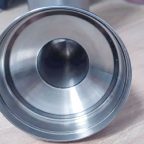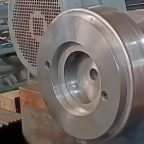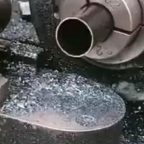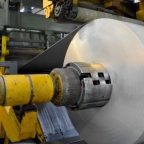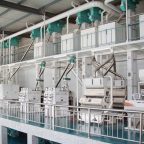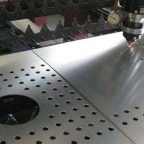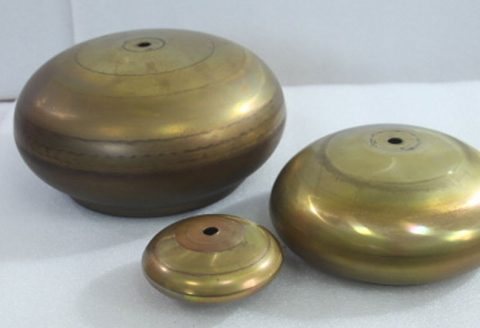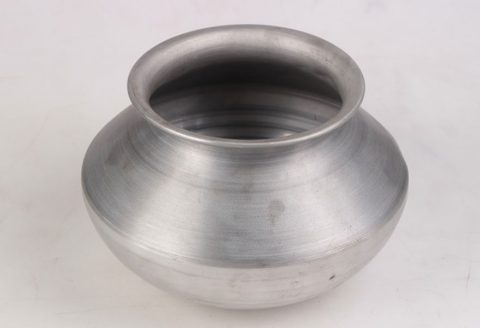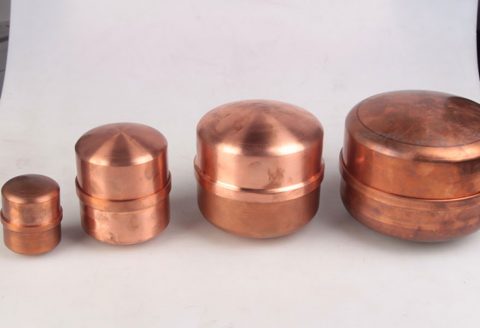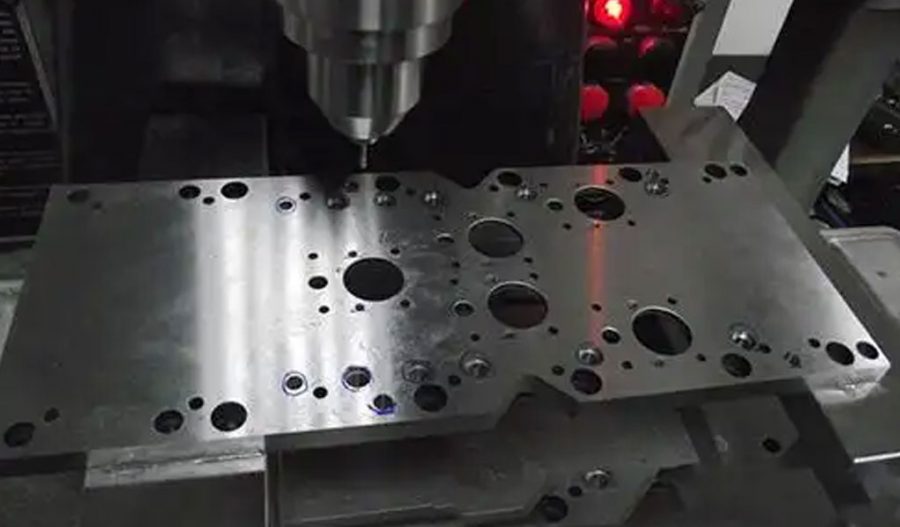
Superplasticity is a remarkable phenomenon observed in certain polycrystalline materials, characterized by their ability to undergo extensive tensile deformation—often exceeding elongations of 400%—without necking or fracturing. This property is particularly valuable in manufacturing processes like hot spinning, where complex geometries and intricate components can be formed with high precision and minimal material waste. Hot spinning, a metal-forming technique, involves the incremental deformation of a rotating workpiece using rollers, typically at elevated temperatures, to shape materials into cylindrical or conical forms. When applied to superplastic alloys, hot spinning leverages their exceptional ductility to produce components with superior mechanical properties and refined microstructures, critical for applications in aerospace, automotive, and energy sectors.
The optimization of process parameters in hot spinning of superplastic alloys is crucial to achieving desired mechanical properties, dimensional accuracy, and microstructural characteristics. Parameters such as deformation temperature, strain rate, spinning speed, roller feed rate, and forming angle significantly influence the material’s flow behavior, grain structure, and defect formation. Simultaneously, microstructure evolution during hot spinning—encompassing phenomena like dynamic recrystallization (DRX), grain growth, and cavitation—plays a pivotal role in determining the final properties of the formed components. This article provides a comprehensive exploration of the interplay between process parameter optimization and microstructure evolution in superplastic alloys during hot spinning, drawing on recent research and industrial applications. It includes detailed comparative tables to elucidate the effects of various parameters and processing conditions on different alloy systems.
Fundamentals of Superplasticity in Hot Spinning
Definition and Mechanisms of Superplasticity
Superplasticity refers to the ability of certain fine-grained polycrystalline materials to exhibit extraordinary ductility under specific conditions, typically at elevated temperatures (above 0.5 times the melting point, Tm, in Kelvin) and low strain rates (10⁻⁵ to 10⁻¹ s⁻¹). The primary deformation mechanism in superplastic alloys is grain boundary sliding (GBS), facilitated by diffusion processes and accommodated by dislocation motion or diffusional creep. GBS allows grains to slide past one another, contributing to uniform deformation without significant strain localization. Other mechanisms, such as intragranular dislocation slip and diffusion creep, may also contribute depending on the alloy composition, temperature, and strain rate.
In hot spinning, superplastic alloys are subjected to complex stress states, including shear, compression, and tension, which influence the dominant deformation mechanisms. The fine-grained microstructure (typically <10 μm) required for superplasticity is achieved through thermomechanical processing techniques such as equal-channel angular pressing (ECAP), high-pressure torsion (HPT), or friction stir processing (FSP). These processes refine the grain structure, enhancing the material’s ability to deform superplastically.
Hot Spinning Process Overview
Hot spinning is a subset of the broader spinning process, where a rotating workpiece (often a flat blank or preform) is shaped by a roller that applies localized pressure, incrementally forming the material into a desired geometry. The process is conducted at elevated temperatures to reduce flow stress and enhance formability, particularly for high-strength alloys like titanium, aluminum, and nickel-based superalloys. The key advantages of hot spinning include:
- High Material Utilization: Minimal material waste compared to machining or casting.
- Complex Geometries: Ability to form intricate shapes, such as thin-walled cylindrical components or conical parts.
- Improved Mechanical Properties: Controlled deformation can enhance strength and toughness through microstructure refinement.
The process parameters in hot spinning include:
- Deformation Temperature: Influences flow stress, grain growth, and phase transformations.
- Strain Rate: Affects the superplastic behavior, with optimal ranges typically between 10⁻⁴ and 10⁻² s⁻¹.
- Spinning Speed: Determines the rotational velocity of the workpiece, impacting heat distribution and deformation uniformity.
- Roller Feed Rate: Controls the rate at which the roller advances, affecting strain distribution and surface quality.
- Forming Angle: Influences the stress state and material flow during spinning.
Superplastic Alloys in Hot Spinning
Superplastic alloys commonly used in hot spinning include aluminum alloys (e.g., AA5083, AA7075), titanium alloys (e.g., Ti-6Al-4V), and nickel-based superalloys (e.g., Hastelloy C276). These alloys are selected for their fine-grained microstructures and ability to exhibit superplastic behavior under controlled conditions. Aluminum alloys are favored for their lightweight properties and applications in automotive and aerospace components. Titanium alloys, known for their high strength-to-weight ratio and corrosion resistance, are critical in aerospace applications, such as turbine components. Nickel-based superalloys are used in high-temperature environments, such as gas turbine engines, due to their excellent creep resistance and thermal stability.
Process Parameter Optimization in Hot Spinning
Influence of Deformation Temperature
Deformation temperature is a critical parameter in hot spinning of superplastic alloys, as it directly affects the material’s flow stress, deformation mechanisms, and microstructure evolution. Superplasticity typically occurs at temperatures above 0.5 Tm, where diffusion processes are enhanced, and flow stress is minimized. For aluminum alloys like AA7075, optimal superplastic behavior is observed between 400–500°C, while titanium alloys like Ti-6Al-4V require temperatures of 750–900°C. Nickel-based superalloys, such as Hastelloy C276, are typically processed at 1000–1150°C due to their higher melting points.
At higher temperatures, the following effects are observed:
- Reduced Flow Stress: Higher temperatures lower the material’s resistance to deformation, facilitating easier forming.
- Enhanced Grain Boundary Sliding: Increased thermal energy promotes GBS, the dominant superplastic deformation mechanism.
- Risk of Grain Growth: Excessive temperatures can lead to dynamic grain growth, reducing strain rate sensitivity and superplastic ductility.
- Phase Transformations: In two-phase alloys like Ti-6Al-4V, temperature influences the α/β phase ratio, affecting deformation behavior.
For example, research on Ti-6Al-4V shows that a temperature of 825°C provides an optimal balance of superplasticity with minimal grain growth, achieving elongations up to 635% at a strain rate of 1 × 10⁻³ s⁻¹. In contrast, temperatures above 875°C lead to dynamic grain growth and increased cavitation, reducing ductility.
Strain Rate Sensitivity
Strain rate is a pivotal factor in superplastic forming, as it governs the rate of deformation and the extent of GBS. Superplastic alloys exhibit high strain rate sensitivity (m > 0.3), where m is defined as the strain rate sensitivity index, calculated as:
[ m = \frac{\partial \ln \sigma}{\partial \ln \dot{\varepsilon}} ]
where σ is the flow stress, and (\dot{\varepsilon}) is the strain rate. Optimal strain rates for superplasticity typically range from 10⁻⁴ to 10⁻² s⁻¹, depending on the alloy and temperature. At lower strain rates, GBS dominates, leading to high elongations, while higher strain rates may induce dislocation creep, reducing ductility.
In hot spinning, the strain rate is influenced by the roller feed rate and spinning speed. For instance, a study on AA7075 alloy processed by friction stir processing achieved a maximum elongation of 500% at a strain rate of 1 × 10⁻² s⁻¹ and 500°C. Conversely, strain rates above 10⁻¹ s⁻¹ led to flow localization and reduced formability.
Spinning Speed and Roller Feed Rate
Spinning speed (rotational velocity of the workpiece) and roller feed rate determine the uniformity of deformation and heat distribution. Higher spinning speeds can improve surface finish but may cause uneven heating, leading to thermal gradients that affect microstructure stability. Optimal spinning speeds for superplastic alloys are typically in the range of 100–500 rpm, depending on the workpiece size and material.
The roller feed rate controls the rate of material displacement and influences the strain distribution. A low feed rate ensures gradual deformation, promoting uniform GBS and minimizing defects like cracking or cavitation. For example, in hot spinning of Ni-based superalloys, a feed rate of 0.5–1 mm/s was found to optimize wall thickness precision and contour characteristics.
Forming Angle and Tool Geometry
The forming angle, defined as the angle between the roller and the workpiece surface, affects the stress state and material flow. Smaller forming angles reduce the shear component of deformation, promoting uniform thinning and minimizing defects. In multi-pass spinning, the angle between passes also influences the final geometry and microstructure. Research on Ni-based superalloys indicates that a forming angle of 15–30° during the first pass improves wall thickness precision, while angles above 45° may lead to contour deviations.
Tool geometry, including roller fillet radius and shape, also plays a role. A smaller fillet radius enhances contact precision but may increase localized stresses, while a larger radius promotes smoother material flow. Optimizing these parameters requires balancing formability with dimensional accuracy.
Microstructure Evolution During Hot Spinning
Initial Microstructure Requirements
Superplasticity requires a fine-grained microstructure (grain size <10 μm) with equiaxed grains and a high fraction of high-angle grain boundaries (HAGBs). Such microstructures are typically achieved through severe plastic deformation (SPD) techniques like ECAP, HPT, or FSP. For example, AA5083 alloy processed by HPT exhibited an average grain size of 7.95–8.32 μm, enabling superplastic elongations up to 400% at 350°C.
The initial microstructure influences the dominant deformation mechanisms and the extent of superplasticity. Alloys with banded or elongated grains, such as rolled 2A97 Al–Cu–Li alloy, undergo dynamic recrystallization during deformation to form equiaxed grains, enhancing superplastic behavior.
Dynamic Recrystallization (DRX)
Dynamic recrystallization is a key mechanism in microstructure evolution during hot spinning of superplastic alloys. DRX can be classified into three types:
- Discontinuous Dynamic Recrystallization (DDRX): Involves the nucleation and growth of new grains, typically observed in aluminum alloys at lower temperatures (400–450°C).
- Continuous Dynamic Recrystallization (CDRX): Occurs through progressive subgrain rotation and boundary formation, common in aluminum alloys like AA7075 at intermediate temperatures.
- Geometric Dynamic Recrystallization (GDRX): Results from grain elongation and fragmentation, observed in high-strain conditions.
For instance, in 2A97 Al–Cu–Li alloy, DDRX dominates at 400–450°C, transitioning to a combination of DDRX and GBS at 450–500°C, and diffusion creep at 500–550°C. DRX refines the grain structure, reducing dislocation density and enhancing superplasticity.
Grain Growth and Cavitation
Dynamic grain growth occurs during hot spinning at elevated temperatures, particularly above the optimal superplastic range. Grain growth reduces the strain rate sensitivity and can lead to strain hardening, limiting ductility. The addition of alloying elements like Sc and Zr in aluminum alloys (e.g., Al-4.5Mg-0.35Sc-0.15Zr) stabilizes the microstructure by forming nanoscale precipitates (Al₃(Sc,Zr)) that pin grain boundaries, minimizing growth.
Cavitation, the formation of voids at grain boundaries or particle interfaces, is a common issue in superplastic deformation. Cavities nucleate at second-phase particles (e.g., Mg₂Si in Al-Mg-Si alloys) and grow under tensile stresses, reducing ductility and fatigue life. Hot preforming reduces cavitation compared to cold preforming, as observed in AA5083, where hot preformed samples exhibited fewer but larger cavities.
Phase Transformations and Texture Evolution
In two-phase alloys like Ti-6Al-4V, superplastic deformation induces phase transformations, such as the α-to-β transition, which affect the microstructure. At 825°C, Ti-6Al-4V maintains a stable 23% β-phase fraction, promoting GBS and achieving high elongations. Texture evolution, characterized by changes in crystallographic orientation, also occurs. For example, SP700 titanium alloy showed a 15% increase in low-angle grain boundaries (LAGBs) due to dislocation accumulation during superplastic deformation at 760°C.
Constitutive Modeling and Simulation
Constitutive Equations for Superplastic Flow
Constitutive models describe the flow behavior of superplastic alloys under hot spinning conditions. The most common model is the power-law equation, expressed as:
[ \sigma = K \dot{\varepsilon}^m ]
where σ is the flow stress, K is a material constant, (\dot{\varepsilon}) is the strain rate, and m is the strain rate sensitivity index. For superplastic alloys, m typically ranges from 0.3 to 0.8. The Arrhenius model, incorporating temperature dependence, is also widely used:
[ \dot{\varepsilon} = A \sigma^n \exp\left(-\frac{Q}{RT}\right) ]
where A is a constant, n is the stress exponent (1/m), Q is the activation energy, R is the gas constant, and T is the absolute temperature. For Al-Mg-Si-Cu alloys, a modified Arrhenius model accurately predicted flow behavior at 440–520°C and strain rates of 2 × 10⁻³–2 × 10⁻² s⁻¹.
Finite Element Modeling (FEM)
Finite element modeling (FEM) is used to simulate the hot spinning process, coupling thermal, mechanical, and microstructural models. FEM predicts strain rates, stresses, and temperature distributions, enabling optimization of process parameters. For example, FEM simulations of Ni-based superalloy spinning revealed that a billet temperature of 420°C and extrusion speed of 0.2 mm/s minimized velocity field deviations.
Microstructural evolution models, such as cellular automaton (CA) models, simulate DRX and grain growth. For 7055 aluminum alloy, CA models accurately predicted grain refinement during hot compression, with an error of less than 8% compared to experimental results.
Comparative Analysis of Process Parameters and Microstructure Evolution
The following tables summarize the effects of process parameters and microstructure evolution in superplastic alloys during hot spinning, based on recent studies.
Table 1: Optimal Process Parameters for Superplastic Alloys in Hot Spinning
| Alloy | Temperature (°C) | Strain Rate (s⁻¹) | Spinning Speed (rpm) | Roller Feed Rate (mm/s) | Forming Angle (°) | Elongation (%) | Reference |
|---|---|---|---|---|---|---|---|
| AA7075 (FSP) | 500 | 1 × 10⁻² | 200–300 | 0.5–1 | 15–30 | 500 | |
| Ti-6Al-4V | 825 | 1 × 10⁻³ | 150–250 | 0.5–0.8 | 20–35 | 635 | |
| Hastelloy C276 | 1100 | 0.01–10 | 100–200 | 0.5–1 | 15–25 | Not specified | |
| AA5083 (HPT) | 350 | 1 × 10⁻¹ | 200–400 | 0.8–1.2 | 20–30 | 400 | |
| SP700 Titanium | 760 | Variable (max m) | 150–300 | 0.6–1 | 15–30 | 3000 |
Notes:
- Elongation values reflect tensile tests under superplastic conditions.
- Forming angles are optimized for first-pass spinning.
- Spinning speeds and feed rates are approximate, depending on workpiece size.
Table 2: Microstructure Evolution in Superplastic Alloys During Hot Spinning
| Alloy | Initial Grain Size (μm) | Deformation Mechanism | Microstructure Changes | Cavitation Behavior | Reference |
|---|---|---|---|---|---|
| AA7075 (FSP) | 7–8 | GBS, DDRX, CDRX | Equiaxed grains, increased HAGBs | Nucleation at Mg₂Si particles | |
| Ti-6Al-4V | 5–10 | GBS, Phase Boundary Sliding | α-to-β transformation, grain growth at 875°C | Low cavitation at 825°C | |
| Hastelloy C276 | 10–15 | DRX, Dislocation Slip | Substructure accumulation, DRX at high T | Not specified | |
| AA5083 (HPT) | 7.95–8.32 | GBS, Dislocation Creep | Reduced cavities in hot preform | Larger cavities in hot preform | |
| 2A97 Al–Cu–Li | 10–20 (banded) | DDRX, GBS, Diffusion Creep | Banded to equiaxed, reduced dislocation density | Minimal cavitation at 500°C |
Notes:
- HAGBs: High-angle grain boundaries.
- Cavitation behavior depends on preform conditions and temperature.
- Microstructure changes are observed post-deformation.
Applications and Industrial Relevance
Aerospace Industry
Superplastic hot spinning is widely used in the aerospace industry to produce lightweight, high-strength components such as turbine blades, nacelles, and fuselage panels. Titanium alloys like Ti-6Al-4V are favored for their high specific strength and corrosion resistance. For example, superplastic forming of Ti-6Al-4V at 825°C has been used to fabricate complex aerospace parts with minimal residual stresses and high dimensional accuracy.
Automotive Industry
Aluminum alloys, such as AA5083 and AA7075, are employed in automotive applications to reduce vehicle weight and improve fuel efficiency. Hot spinning enables the production of thin-walled components like wheel rims and structural panels. The use of FSP to refine the microstructure of AA7075 has resulted in parts with elongations up to 500%, enhancing formability and crash resistance.
Energy Sector
Nickel-based superalloys like Hastelloy C276 are used in hot spinning to produce components for gas turbines and nuclear reactors. The ability to form complex shapes at high temperatures (1000–1150°C) ensures excellent creep resistance and thermal stability, critical for energy applications.
Challenges and Future Directions
Challenges in Hot Spinning of Superplastic Alloys
- Cavitation and Defect Formation: Cavitation reduces fatigue life and must be minimized through optimized preforming and temperature control.
- Grain Growth Control: Maintaining fine grains at high temperatures is challenging, requiring alloying additions or advanced processing techniques.
- Process Scalability: Hot spinning is time-consuming for large components, necessitating faster forming methods without compromising superplasticity.
- Cost and Material Limitations: High-cost alloys like titanium and nickel-based superalloys limit widespread adoption, requiring cost-effective alternatives.
Future Research Directions
- Advanced Constitutive Models: Developing models that account for strain-induced microstructure evolution and phase transformations to improve predictability.
- Hybrid Forming Techniques: Combining hot spinning with other processes (e.g., friction stir processing) to enhance microstructure control and formability.
- Alloy Design: Engineering alloys with thermally stable precipitates to minimize grain growth and cavitation.
- Automation and Real-Time Monitoring: Implementing sensors and machine learning to optimize process parameters in real-time, improving efficiency and quality.
Conclusion
The optimization of process parameters and microstructure evolution in hot spinning of superplastic alloys is a complex interplay of material science, mechanics, and engineering. By carefully controlling deformation temperature, strain rate, spinning speed, roller feed rate, and forming angle, manufacturers can achieve exceptional formability and mechanical properties. Microstructure evolution, driven by mechanisms like GBS, DRX, and phase transformations, determines the final properties of the formed components. Comparative analyses, as presented in the tables, highlight the alloy-specific responses to processing conditions, guiding the selection of optimal parameters. As industries continue to demand lightweight, high-performance components, advancements in superplastic hot spinning will play a pivotal role in meeting these challenges, supported by ongoing research into constitutive modeling, hybrid processing, and alloy design.
Maximize Tooling and CNC Metal Spinning Capabilities.
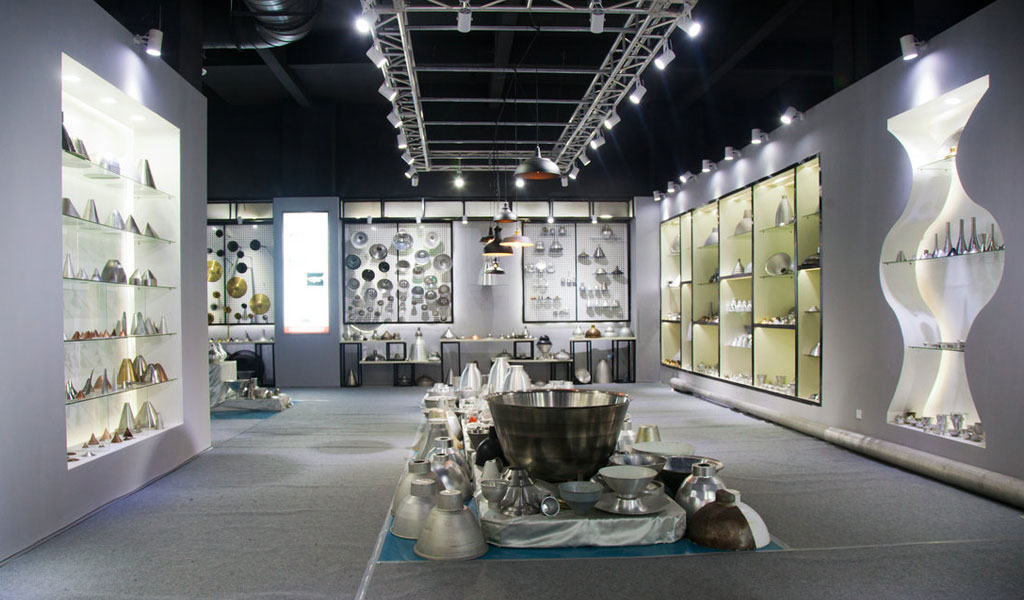
At BE-CU China Metal Spinning company, we make the most of our equipment while monitoring signs of excess wear and stress. In addition, we look into newer, modern equipment and invest in those that can support or increase our manufacturing capabilities. Our team is very mindful of our machines and tools, so we also routinely maintain them to ensure they don’t negatively impact your part’s quality and productivity.
Talk to us today about making a rapid prototype with our CNC metal spinning service. Get a direct quote by chatting with us here or request a free project review.
BE-CU China CNC Metal Spinning service include : CNC Metal Spinning,Metal Spinning Die,Laser Cutting, Tank Heads Spinning,Metal Hemispheres Spinning,Metal Cones Spinning,Metal Dish-Shaped Spinning,Metal Trumpet Spinning,Metal Venturi Spinning,Aluminum Spinning Products,Stainless Steel Spinning Products,Copper Spinning Products,Brass Spinning Products,Steel Spinning Product,Metal Spinnin LED Reflector,Metal Spinning Pressure Vessel,
